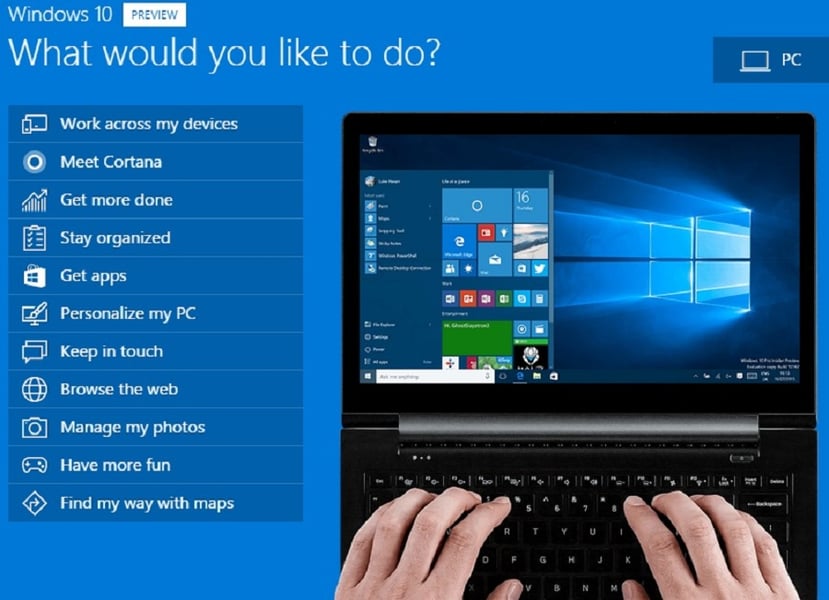A long-anticipated upgrade to Windows is here and free to the masses, but advisers may want to hold off a bit before they download it, as there may be kinks for Microsoft to work out.
As with most new software releases, there are two options: be one of the first to adopt a new operating system or program, or wait and see what fixes need to be made. Windows 10 is no exception, even if it comes with some enticing features that many advisers will appreciate.
Perhaps two of its most welcomed features include the return of the start button, which disappeared with the release of Windows 8, which had an app-styled navigation with a tiled look for all system versions, and Edge, the new web browser that is replacing Internet Explorer. Microsoft, which has a
demo of Windows 10 on its site, is offering the operating system upgrade for free to any existing users of Windows 7 and 8.1, and businesses can get a free 90-day trial of the enterprise version.
Still, advisers should beware before jumping onto the Windows web portal or Microsoft store to grab the new operating system.
"I always caution any of my clients to really just take a second [to evaluate a new technology]," said Lorraine Ell, president and director of training at Excellat Consulting, a technology firm for advisers. "I hold back a little on adopting new systems to see if they can work the bugs out of it first."
Sue Glover, president of Susan Glover & Associates, a financial services technology consultancy, said counting to 100 before downloading the new system is advisable "just to know what can go right and also know what can go wrong.
"You can address the problem beforehand by someone else being the guinea pig," she added.
When senior management feels that it is time to make the switch to a new software platform, Ms. Glover said that advisers should talk with others who have already tried the program, as well as work with an IT department to implement it.
The best way to retrieve the new operating system is through Microsoft, as it will be most secure, Ms. Ell said.
Other Microsoft 10 features include more security geared to protect personal computers against viruses and malware. In addition, there is a personal digital assistant called Cortana to helps users navigate through the system.
IT departments have long been waiting for the new version of Windows to come. According to a
Spiceworks survey, 21% of IT professionals are extremely excited about Windows 10 adoption and 28% are very interested. Another 23% are interested and 22% somewhat interested. Only 4% are not interested at all and 2% did not hear enough about it.
However, compare those percentages to when these professionals said they will adopt the new service. In the same survey, only 7% of IT professionals said they will download Windows 10 as soon as it is released, while 35% said they will wait several months until after the initial bugs are fixed.
Chris Chen, an adviser with Insight Financial Strategists in Waltham, Mass., said that he's not going to spring for Windows 10 just yet. In fact, he said he's holding on to Windows 7 as long as he can.
"What I like about Windows 7 is that it is familiar," Mr. Chen said. "I know how to use it … it does its job that you require it to do, and that's great."
Mr. Chen, who has four computers that use Windows said he bought the
Windows 8 system toward the end of 2012, but returned it after only three days. The navigation of the desktop operating system was just too much like a tablet and didn't serve his needs. Until the inevitable bugs are worked out with Windows 10, he said that he's going to stick with his current version of the operating system.
"The basic issue with any kind of software released is it doesn't matter how much work the manufacturer does to make sure it's ready for prime time — there will always be bugs," Mr. Chen said. "Small-business people like me, we don't really want to get into the business of fixing those bugs."







